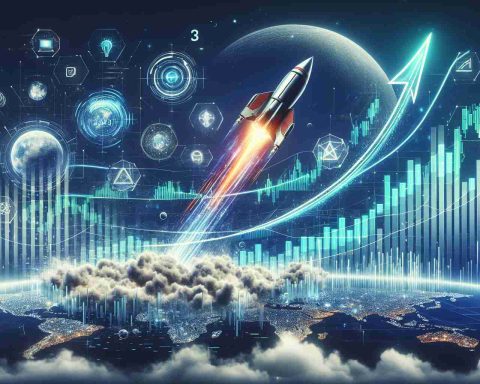Get ready for Plum Acquisition Corp. IV to make waves in the market! The company has officially priced its initial public offering (IPO) at $10.00 per unit, set to launch on January 14, 2025.
Starting January 15, 2025, the 15 million units will be available for trading on the Nasdaq Global Market under the ticker “PLMKU.” Each unit consists of a Class A ordinary share paired with half a redeemable warrant. Interested investors can use each full warrant to purchase an additional Class A ordinary share for $11.50. Once trading is initiated separately, the shares and warrants will be designated as “PLMK” and “PLMKW,” respectively.
This strategic move aims to explore various business combinations across different sectors, utilizing the management team’s extensive expertise and established relationships. Cohen & Company Capital Markets is at the helm of this offering, with Seaport Global Securities joining as the co-book-running manager. In a show of confidence, underwriters have a 45-day option to acquire up to 2.25 million additional units for overallotments.
This upcoming IPO marks a significant step for Plum Acquisition Corp. IV as it ventures into the public market. Investors are keenly watching this launch, as it could represent new opportunities and growth potential in the investment landscape. Stay tuned!
Plum Acquisition Corp. IV: A Potential Ripple Effect on Economies and Investments
As Plum Acquisition Corp. IV prepares for its initial public offering (IPO), pricing units at $10.00 each and targeting a launch on January 14, 2025, the implications extend beyond mere trading numbers. The advent of SPACs (Special Purpose Acquisition Companies), including Plum Acquisition Corp. IV, has become a significant factor in shaping modern investment landscapes, influencing not only economies but potentially impacting society and the environment in nuanced ways.
One essential facet of SPACs, including Plum IV, is their role in facilitating capital flow to innovative startups and industries that might otherwise struggle to secure traditional funding. These organizations often target companies involved in cutting-edge technologies, renewable energy, and sustainable practices. The strategic endeavors of Plum IV could lead to significant investments in sectors focused on combating climate change, thus promoting environmental sustainability. If Plum IV focuses on acquiring firms within the green technology niche, it might bolster the development of sustainable solutions which are vital for our planet’s health.
Furthermore, enhancing sustainable business practices can also influence economic resilience. Investing in green technologies creates jobs—an essential factor for local economies. As Plum IV’s management explores diverse business combinations, the fruitful partnerships could lead to economic revitalization, particularly in areas impacted by traditional industry decline. Economic growth spawned from environmentally responsible initiatives can foster stronger communities and improve living standards.
The nature of SPACs also allows for accelerated investment timelines compared to traditional IPO processes. This speed can be essential, especially in addressing urgent global issues like climate change and economic inequality. Through rapid investment, companies can innovate solutions more quickly, benefitting humanity at large.
Investor sentiment towards environmentally responsible investments continues to grow, shaping a market that rewards sustainability. As the landscape shifts, corporations are increasingly held accountable for their environmental footprint. Consequently, Plum Acquisition Corp. IV’s operational strategies and their selected partners may influence broader market trends toward sustainable practices.
In the context of future implications for humanity, the path corporations take—particularly those like Plum IV—could lead to a transformative shift in societal values. As more funds are directed towards sustainability and responsible investing, there is a potential for a gradual redefinition of success in business. Success may increasingly be measured by positive societal impact rather than solely by profit margins, suggesting a future where the well-being of humanity and the planet are paramount.
In conclusion, while the initial public offering of Plum Acquisition Corp. IV represents an important financial milestone, its implications stretch far beyond the stock market. With the potential to positively affect the environment, shore up economies, and guide humanity towards a more sustainable future, the actions of this SPAC could resonate significantly in the years to come. Investors and stakeholders should keep a close eye on Plum IV and its strategic choices, as these could very well herald an exciting new era of investment focused on the collective advancement of society.
Plum Acquisition Corp. IV: What You Need to Know About the Upcoming IPO
Overview of Plum Acquisition Corp. IV
Plum Acquisition Corp. IV is gearing up for its initial public offering (IPO), which is scheduled to launch on January 14, 2025. Priced at $10.00 per unit, the offering promises to attract significant investor interest, particularly given its reputation for pursuing innovative business combinations across various sectors.
Key Features of the IPO
– Trading Information: Starting January 15, 2025, the 15 million units will be available for trading on the Nasdaq Global Market under the ticker symbol “PLMKU.”
– Unit Composition: Each unit will include a Class A ordinary share along with half a redeemable warrant. This structure allows investors to obtain a full warrant to purchase an additional Class A share at a later date for $11.50.
– Separate Listings: Once trading begins, shares and warrants will be traded separately under the symbols “PLMK” for shares and “PLMKW” for warrants.
Management Expertise
Plum Acquisition Corp. IV is backed by a management team known for its extensive expertise and established industry relationships. This experience is expected to be crucial as the company evaluates potential business combinations that can deliver value to shareholders.
Use Cases for Investors
1. Diverse Investment Strategy: Investors looking to diversify portfolios can consider the opportunity to invest in a SPAC (Special Purpose Acquisition Company) that aims to tackle multiple sectors.
2. Warrant Potential: The ability to convert warrants into additional shares provides an added layer of flexibility and potential upside for early investors.
Pros and Cons of Investing in Plum Acquisition Corp. IV
Pros:
– Potential for High Returns: The structure of the IPO and the management team’s expertise may lead to high-growth opportunities.
– Market Timing: Launching in early 2025 positions Plum to capitalize on market trends and emerging sectors.
Cons:
– Market Volatility: SPACs are often subject to high volatility and investor sentiments.
– Response to Business Combinations: The ultimate success of the investment hinges on how well the management executes its strategy in acquiring and managing the target companies.
Pricing Overview
The IPO will be launched at a unit price of $10.00. This price point is designed to attract a range of investors, from retail to institutional. With underwriters holding a 45-day option for additional units, there is strong market confidence in the demand for this offering.
Future Trends and Predictions
As the SPAC market evolves, firms like Plum Acquisition Corp. IV may redefine how acquisitions are conducted, focusing increasingly on technology-driven sectors. Investors should monitor this space for shifts in regulatory landscapes and investor preferences that could impact future ventures.
Conclusion
With its strategic IPO slated for early 2025, Plum Acquisition Corp. IV is positioned to make a significant impact in the market. Investors should stay informed and evaluate the offering based on their individual investment strategies and appetite for risk. For more details on the evolving IPO landscape, visit SEC.










